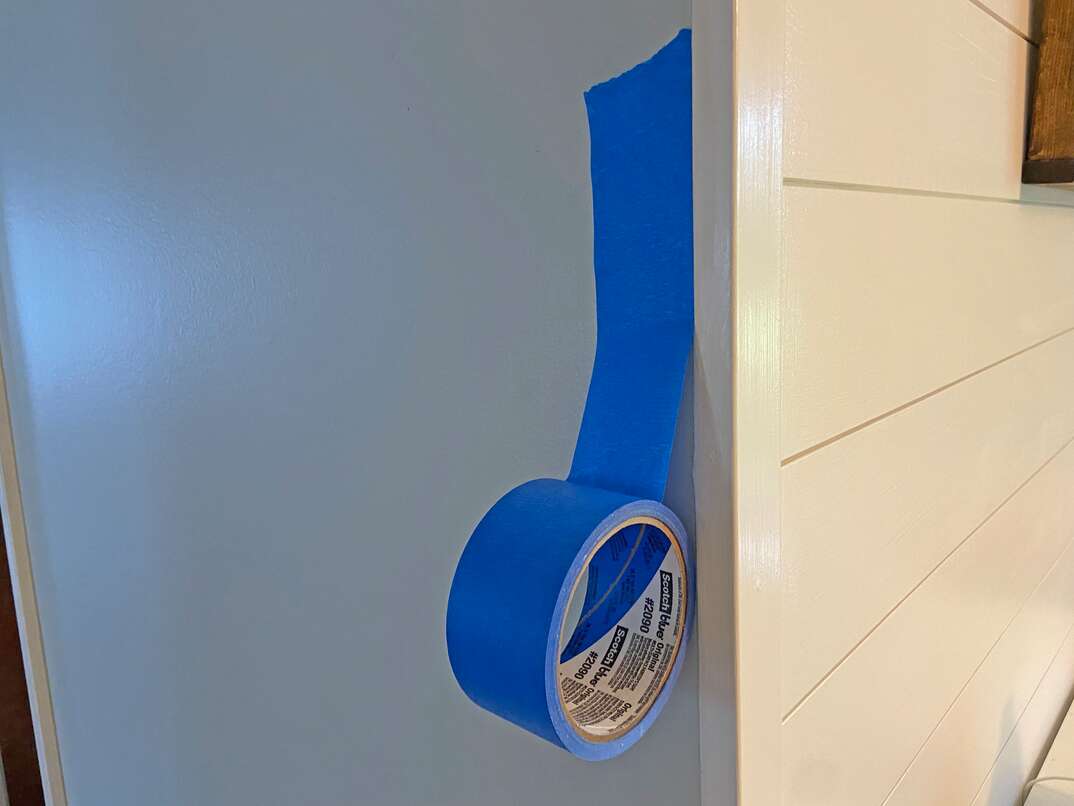Tale of the Tape: How to Use Painter's Tape

Ready to paint (or repaint) a room? You’ve picked out the perfect color, chosen the best brushes and removed all of the furniture. Before you crack open that first paint can, there’s one more very important step: applying painter's tape.
This May Also Interest You: 4 Ways to Match Paint Colors for Touchups
Using painter's tape ensures you have a clean, professional-looking painted room. Here’s a guide to using it effectively.
What Is Painter’s Tape?
Painter's tape is a tape made from a special material that is used to keep paint off of surfaces that aren’t supposed to be painted. Before painting, apply it to moldings, corners, around windows and doorways to protect surfaces that aren’t being painted.
In some ways, it resembles masking tape, but the effectiveness of these two tapes when it comes to painting is not alike. Masking tape is thinner, which might allow the paint to seep through. Painter's tape is more durable, which means it most likely won’t split or tear when you are applying it. When the paint is dry, painter's tape is designed to be removed easily, doesn’t leave behind any adhesive and shouldn’t pull off the paint. Masking tape, on the other hand, often leaves a sticky residue on surfaces when removed and could pull off your new coat of paint.
There are a variety of painter's tapes to choose from. Things to look for include the surface type on which it will be applied, interior or exterior use and how long the tape can remain in place. If you are painting indoors, look for a tape that works on multiple surfaces, including painted walls, woodwork, glass and metal. There are special tapes for textured surfaces, such as stucco or brick. Painter's tape can also be found in various widths. Consult your local paint shop to find out which is the best type and width of painter's tape for your job.
Getting Started
Before applying painter's tape, make sure the surfaces are clean. The tape won’t adhere to dirty or dusty surfaces. At a minimum, rub a damp cloth along all surfaces you plan to tape. If the molding or other surface is greasy, use soap and water. Let dry completely before attempting to lay the painter's tape.
When buying painter's tape, you might also want to pick up a painter's tape applicator. These applicators help you get a straight line of tape by using the surface adjacent to the wall you’re painting as a guide. They also come with a built-in cutter which will ensure a clean slice. The applicator is easy to use: Simply roll it along the edge of the molding, ceiling, wall or window frame. When the tape is in place, slice it.
Once the tape is in place, go back along it and press it down to create a good bond. This will help ensure paint doesn’t ooze under the tape. Using a tool with a dull blade, like a putty knife, works well for this step.
Painting Corners
Painting a big empty wall is easy, but there are some tricky parts, like corners. Luckily painter's tape can help. Run the piece of tape up the wall and press it into the corner with the putty knife. Take a sharp knife and cut the tape in half at the crease. Now the wall you aren’t painting is protected.
Painting Ceilings
Painter's tape combined with lightweight plastic sheeting will help protect the walls when you are painting the ceiling. Choose a wider, stronger painter's tape for this task. Press only the top half of the tape onto the ceiling. Stick the edge of the plastic sheeting to the bottom unattached sticky side. Make sure it has adhered strongly. Now you can evenly paint your ceiling with no drips on the walls. This trick also works well when painting around doorways and windows.
More Related Articles:
- How Much Do Professional Painters Charge?
- How Much Does It Cost to Paint a Room?
- How Much Does It Cost to Paint a House?
- How to Hang Wallpaper
- How Much Does Wallpaper Cost?
How and When to Remove Painter's Tape
Painting job done! Good work, now it’s time to clean up. When it comes to removing the painter's tape, in an ideal world, you would remove it while the paint is still wet. However, this isn’t usually possible, especially when you think about the time it takes to paint an entire room. Add in the fact that most paints today are quick-drying, and it’s almost inevitable that the paint will be dry when you are ready to remove the painter's tape. Also, if you plan on doing a second coat, you certainly don't want to remove the painter's tape only to reapply it. In fact, you shouldn’t.
When purchasing painter's tape, look for one that states it will remove cleanly for a few days — three days is common, but some claim to remove cleanly for up to 14 days. When you are ready to pull the tape off, score the edge of it with the putty knife first to loosen the bond it has with the wall. Then pull at a 45-degree angle. Both of these techniques will ensure that you don't pull off your new paint in the process.
Feeling more confident about tackling your next paint job? Painter's tape (and the applicator) is a small but mighty tool. It’ll not only keep your unpainted surfaces paint-free, but it’ll also help make the surfaces you do paint look professional.


